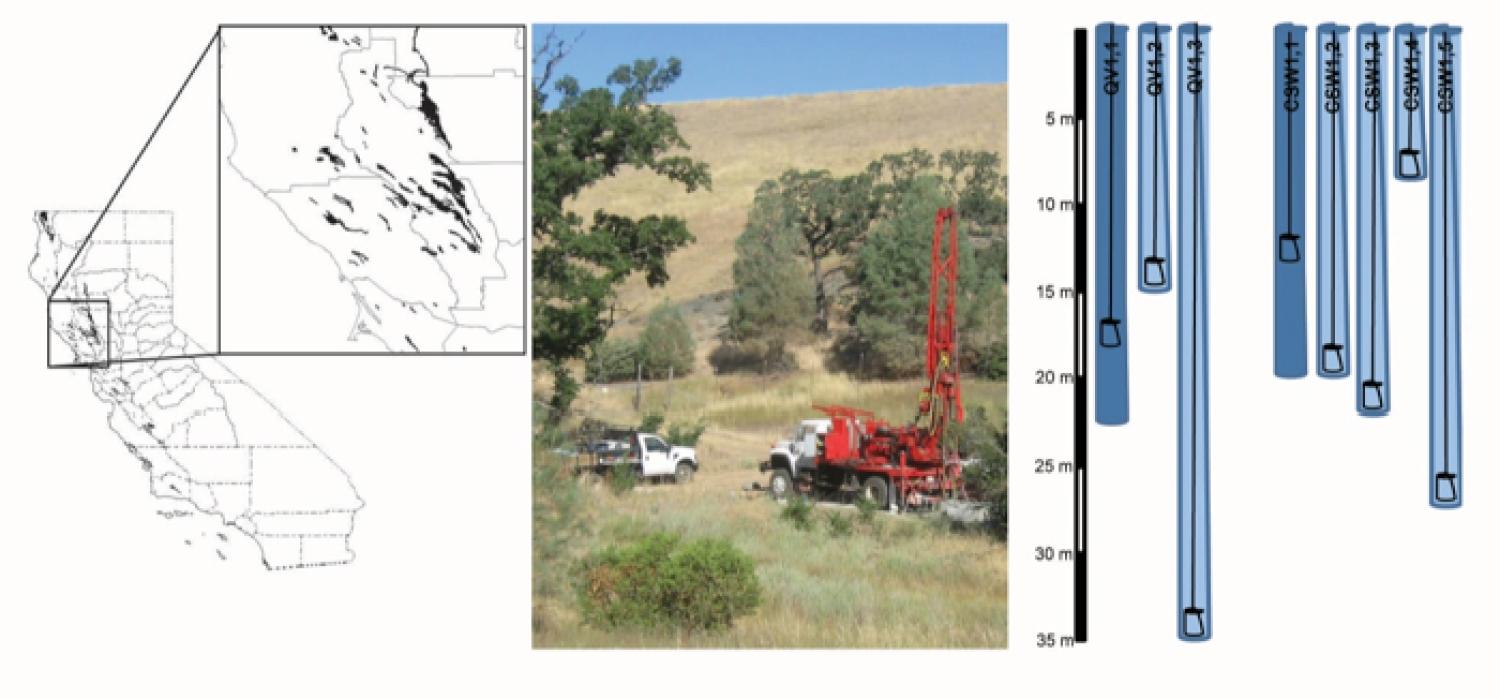Coast Range Ophiolite Microbiological Observatory

Figure 1. Left: CROMO location in CA, peridotite and serpentinite are colored black. Middle: Drill rig at work drilling the 8-well array in 2011. Right: Schematic of well array at Quarry Valley site. Cores were retrieved from the wells colored dark blue.
Coast Range Ophiolite Microbiological Observatory Sites
Coast Range Ophiolite Microbiological Observatory Site 1 (CROMO I)
This borehole was drilled in the Core Shed area of the McLaughlin Natural Reserve. This area is a grassy flat with low shrubs and a few introduced trees, and the Homestake Core Shed houses archived cores from initial mining surveys of the land. Upslope of the drilling area are reddish altered peridotite blocks, and green-blue scrapes showing fresher (i.e., less oxidized by surface weathering) serpentinite where the soil cover has eroded. A few meters of soil was underlain by bedrock. Bottom of hole was at a depth of 45 m. Post-drilling measurement of the uncased borehole gave a pH of 11.4. Core was recovered only from primary hole at this site; four additional water monitoring wells (2-inch diameter) were drilled within meters of this site to add lateral and vertical context for the central hole.
Coast Range Ophiolite Microbiological Observatory Site 2 (CROMO II)
This borehole was drilled in the Quarry Valley area of the McLaughlin Natural Reserve. This area is characterized by serpentine meadow flats, fairly steep slopes with reddish altered peridotite outcrops or blocks (visible even in aerial photos). A few meters of soil graded into lesser altered material and finally bedrock. Bottom of hole was at a depth of 31 m. Post-drilling measurement of pH in the uncased borehole gave a pH of 12.5. Core was recovered only from primary hole at this site; two additional water monitoring wells (2-inch diameter) were drilled within meters of this site to add lateral and vertical context for the central hole.

